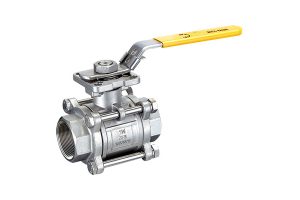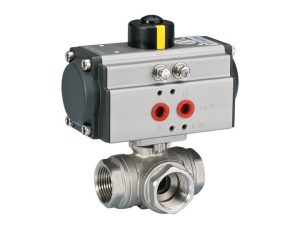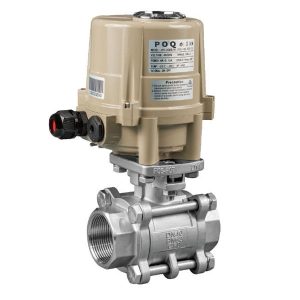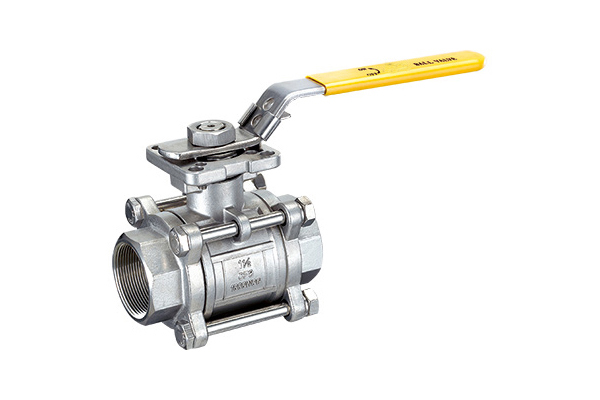Understanding the different types of valve threads is crucial for ensuring proper system performance in both industrial and commercial settings. Threaded valves play a pivotal role in facilitating secure, leak-proof connections, but choosing the right thread type can be a challenge given the variety of standards and designs available. From NPT valves commonly used in the United States to BSP threads, such as BSPT and BSPP, found in global applications, each threading system offers unique characteristics suited to specific needs.
Valve types like the thread ball valve or threaded ball valve rely heavily on precise threading for effective operation, especially when system pressure integrity is critical. Whether you’re working with tapered NPT threads for a tight seal, or BSP screw threads tailored for compatibility, understanding the distinctions between thread types is key to preventing installation issues, leaks, and downtime. This guide will break down the mystery surrounding NPT, BSPT, BSPP, and G threads to help you make informed decisions and ensure optimal performance for your threaded valve systems.
Introduction threaded valve
Threaded valves are integral to ensuring secure and efficient connections in various piping systems, whether in industrial or commercial applications. Their effectiveness lies largely in the compatibility and precision of their thread types. For instance, NPT threads, with their tapered design, ensure tight seals in high-pressure systems, while BSP pipe threads, including BSPP and BSPT, cater to both parallel and tapered threading needs. The combination of BSPP threads for parallel connections and BSPT threads for tapered ones illustrates the flexibility of these standards in global markets. Likewise, the G threads offer compatibility with parallel threading systems, expanding their scope for diverse applications. Understanding these thread variations, from NPT threads to the nuances of BSPP and BSPT, is essential for selecting the right threaded valve, ensuring leak-free operation, and maintaining long-term system reliability.

Brief overview of threaded valve connections in industrial and commercial applications.
Threaded valve connections are a key component in industrial and commercial piping systems, valued for their versatility, reliability, and efficiency in creating secure joints. These connections are designed to accommodate various pressure conditions and fluid types, making them ideal for applications ranging from oil and gas to water treatment and manufacturing. Their threaded design ensures straightforward installation and maintenance, which minimizes downtime and operational costs. Whether facilitating flow control in compact systems or managing large-scale operations, threaded valves offer unparalleled adaptability, making them a go-to choice for engineers and technicians across diverse industries.
Importance of understanding thread types for compatibility and leak prevention.
Understanding thread types is essential for ensuring proper connections and avoiding leaks in industrial and commercial systems. Thread types determine how components fit together, influence the sealing mechanism, and affect the performance of the entire system. Without the correct thread type, mismatched connections can result in threading issues, poor sealing, and fluid loss. Knowledge of thread standards, such as NPT, BSPT, BSPP, and G, helps identify the right components for specific systems, ensuring compatibility across various applications and minimizing operational issues. Proper thread selection supports efficient installation, reduces unnecessary downtime, and prevents costly repairs.
Mention common uses like thread ball valves and threaded ball valves.
Threaded valves are frequently used in industrial and commercial systems to manage and control the flow of liquids and gases. Thread ball valves and threaded ball valves are common examples, valued for their ability to provide reliable flow control and shut-off functionality. These valves are used in systems such as water distribution, oil and gas pipelines, chemical processing, and HVAC installations. Their threaded design allows for straightforward integration into piping systems, ensuring secure and tight connections. The compatibility of thread types with various standards supports their wide use across different industries and applications.

Understanding NPT Threads
What is NPT (National Pipe Tapered) threading?
NPT, or National Pipe Tapered threading, is a threading standard designed for sealing and connecting pipes and fittings. The threads are cut at a taper, which enables a tighter connection as parts are screwed together. To ensure a secure and leak-resistant fit, NPT connections often require a sealing material, such as thread sealant or tape. This threading type is commonly used in industrial and commercial systems for applications including fluid transfer, gas distribution, and pressure control, where dependable connections are necessary to maintain system functionality.
Applications of npt valves and npt ball valves in various industries.
NPT valves and NPT ball valves are widely used in industries requiring fluid and gas control. They are integral to systems such as oil and gas pipelines, water treatment plants, chemical processing facilities, and HVAC systems. These valves provide secure and reliable connections in applications where maintaining pressure and preventing leaks is critical. Their design and threading ensure compatibility with standardized systems, making them suitable for installations and operations across various industrial and commercial sectors.
Characteristics of npt threads and their sealing efficiency.
NPT threads are designed with a tapered profile, where the thread diameter gradually decreases along the length of the connection. This tapering ensures that as the threads are tightened, the mating surfaces compress against each other, creating a mechanical interference that enhances the seal. To improve sealing efficiency, thread sealant or tape is often applied to fill minor gaps and prevent leakage. This design makes NPT threads effective in systems that require consistent sealing under varying pressure and temperature conditions, supporting reliable operation in industrial and commercial applications.
BSPT vs BSPP Explained
Difference between BSPT (British Standard Pipe Taper) and BSPP (British Standard Pipe Parallel).
BSPT and BSPP threads differ in their design and sealing methods. BSPT threads are tapered, meaning the diameter of the thread decreases along the length, creating a seal as the threads are tightened. BSPP threads, on the other hand, are parallel with a consistent diameter, and they rely on a separate sealing component, such as an O-ring or gasket, to ensure a tight connection. BSPT threads are commonly used in applications requiring a mechanical seal through thread engagement, while BSPP threads are suited for systems where sealing components are preferred for maintaining a leak-free connection. Both thread types are widely used in various industries for fluid and gas management.

Overview of bsp thread, bsp screw thread, and bsp pipe thread in threaded valve connections.
BSP threads, including BSP screw threads and BSP pipe threads, are standardized threading systems used for pipe and valve connections. BSP screw threads are used for fastening components, while BSP pipe threads are designed for pipe connections requiring fluid or gas sealing. These threads ensure compatibility with other BSP standard components, allowing for secure and reliable connections in fluid transfer, gas distribution, and pressure control systems. BSP thread types play a critical role in maintaining the integrity of connections in threaded valve applications across various industries.
Typical uses for bspp threads and bspt threads, including global standards adoption.
BSPP threads are primarily used in applications where a reliable seal is achieved with the aid of a sealing component, such as an O-ring or gasket. BSPT threads, with their tapered design, are commonly used in systems requiring a mechanical seal directly through thread engagement. BSPP threads are commonly applied in hydraulic and pneumatic systems, while BSPT threads are prevalent in plumbing and gas systems. Both thread types are recognized globally, with BSP standards being adopted across regions for compatibility and uniformity in fluid and gas transfer, control, and distribution systems. These threads enable standardized connections in industries such as manufacturing, construction, and energy.
G Threads: A Closer Look
Introduction to G threads and their compatibility with parallel threading systems.
G threads are parallel threads based on the British Standard Pipe (BSP) system, designed for non-tapered connections. They are commonly used in applications where sealing is achieved with the use of additional components such as washers or O-rings. Due to their consistent diameter, G threads are compatible with parallel threading systems, ensuring uniformity and reliable engagement. These threads are used in various industries for creating standardized connections in fluid and gas systems, supporting efficient assembly and maintenance practices.
Benefits and challenges of using g threads in threaded valve systems.
G threads provide uniformity in threaded valve systems through their parallel design, allowing for consistent engagement and compatibility across components. They support ease of assembly in systems that incorporate standardized connections, reducing the complexity of matching thread types. However, their application often requires additional sealing components, such as gaskets or O-rings, to prevent leakage. This adds an extra step in system assembly and maintenance, increasing the reliance on proper sealing element selection and installation to ensure effective operation in fluid and gas systems.
Industries and applications where G threads are preferred.
G threads are widely used in industries that require reliable threaded connections in fluid and gas systems. They are commonly applied in the manufacturing sector for assembling machinery and equipment where standardized threading is essential. In the energy industry, G threads are used in systems for transferring fluids and managing gas flow. These threads also find applications in hydraulic and pneumatic systems, where compatibility with parallel threading systems ensures efficient integration of components. Their role in achieving secure connections makes them suitable for a range of industrial and commercial applications.

Choosing the Right Thread Type for Your Application
Factors to consider when selecting the appropriate thread type for valves.
When selecting the appropriate thread type for valves, it is important to evaluate compatibility with system components to ensure proper fit and function. Consider the pressure requirements of the application, as different thread types are designed to handle varying levels of pressure. The sealing method used in the system is another key factor, with some threads requiring additional components such as O-rings or gaskets to prevent leakage. Compliance with applicable industry standards ensures uniformity and reliability across operational systems, making it essential to align thread selection with technical and regulatory requirements.
Ensuring compatibility with bspp bspt, NPT, and G thread systems.
Ensuring compatibility with BSPP, BSPT, NPT, and G thread systems requires accurate identification of thread types and adherence to specific system requirements. Understanding the differences in thread design, such as tapered versus parallel configurations, is essential for selecting the right components. Sealing requirements play a key role, as some systems rely on thread engagement while others require additional elements like sealing tape, gaskets, or O-rings. Compliance with applicable regional or industry standards ensures uniformity and functional reliability across systems, reducing the risk of operational disruption or component incompatibility.
Role of high-quality threaded ball valves in achieving a secure and reliable fit.
High-quality threaded ball valves contribute to secure and reliable connections by ensuring precise threading that aligns with industry standards. Precision in threading reduces the risk of mismatched components and ensures proper engagement for operational integrity. Material integrity plays a critical role in maintaining durability and performance under system pressures and conditions. Compatibility with system requirements, including thread type and sealing methods, supports efficient integration and minimizes potential leaks or operational disruptions. These factors collectively ensure the valve’s reliability in controlling fluid or gas flow.
Maintenance and Troubleshooting Threaded Valves
Tips to inspect and maintain threaded valves for optimal performance.
Inspecting and maintaining threaded valves requires regular checks for signs of wear, including thread damage or corrosion, to ensure proper functionality. Sealing components such as gaskets or O-rings should be examined for integrity and replaced as needed to prevent leaks. Threads should be cleaned periodically to remove debris or buildup that may affect engagement. It is essential to follow manufacturer guidelines for specific maintenance procedures and replacement intervals, ensuring the valve’s components remain in proper working condition and aligned with operational requirements.
Guidance on resolving misalignment or leaks in bsp screw thread and npt threads.
Resolving misalignment or leaks in BSP screw thread and NPT threads begins with identifying the source of the issue, such as improper thread engagement or damage to sealing components. Threads should be inspected for signs of wear, deformation, or cross-threading that could affect alignment. If leaks are detected, the affected connection should be reassembled with appropriate sealing materials, such as thread tape or pipe dope, ensuring even application to prevent gaps. Proper torque should be applied during assembly to achieve secure engagement without over-tightening, which could compromise the threads or sealing surfaces. Regular checks and adherence to manufacturer specifications help maintain alignment and minimize recurring issues.

Highlight how thread type impacts the lifeline of valve fittings.
The thread type selected for valve fittings directly affects their durability and performance by influencing factors such as compatibility with system components, sealing efficiency, and resistance to wear. Proper thread alignment ensures secure engagement, reducing the risk of leaks or mechanical stress. Thread types designed for optimal sealing prevent fluid or gas loss under varying pressure conditions, maintaining system integrity. Resistance to wear, particularly in high-use or challenging environments, is determined by the threading’s material properties and precision. Aligning thread type with operational requirements helps preserve the functionality and lifespan of valve fittings.
FAQ threaded valve
Q1. How does understanding thread types improve the performance of a threaded ball valve?
Understanding thread types is critical for ensuring the correct fit and optimal performance of a threaded ball valve. For instance, selecting an NPT valve with tapered threads ensures tighter seals in high-pressure applications, while recognizing the differences in BSP thread and BSP screw thread types allows for proper compatibility with international systems. Choosing the right thread type for the valve ensures a secure connection, minimizing leaks and operational issues.
Q2. What factors should be considered when selecting an NPT valve versus a threaded ball valve with BSP thread?
When selecting an NPT valve or a threaded ball valve with BSP thread, it is essential to consider system requirements such as pressure tolerance, alignment, and sealing needs. NPT ball valves typically use tapered threads for pressure-tight seals, making them ideal for high-pressure systems. BSP threads, including BSPT and BSPP, are common in international systems and require precise thread engagement and sealing methods, such as O-rings or washers, to prevent leaks. Understanding these differences helps ensure the valve matches the application’s specifications.
Q3. What are common issues encountered when working with BSP screw thread systems and NPT ball valves?
Common issues include thread misalignment, improper sealing, and material incompatibility. BSP screw thread systems often require exact engagement and sealing techniques to avoid gaps or fluid loss, while NPT ball valves rely on proper torque to create a secure seal with their tapered threads. Misalignment during installation increases the risk of leaks and damage to threaded components. Regular inspection, cleaning, and adherence to manufacturer guidelines are key to resolving these issues and maintaining functional threaded valves.
Conclusion threaded valve
Understanding valve thread types, including BSP pipe thread, BSPP BSPT, BSPP threads, BSPT thread, NPT threads, and G threads, is vital for ensuring system compatibility and maintaining optimal performance in threaded valve applications. Each thread type comes with distinct characteristics that impact sealing, alignment, and durability. Whether selecting NPT threads for high-pressure requirements or choosing BSPP and BSPT threads for specific international standards, aligning thread type with operational needs minimizes risks of leaks and misalignment. Recognizing the role of G threads in certain systems further underscores the importance of thread type knowledge in achieving secure and reliable connections.

